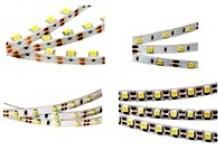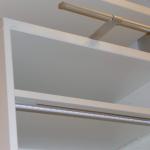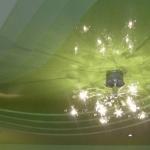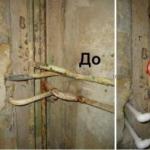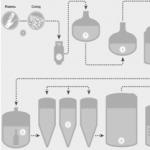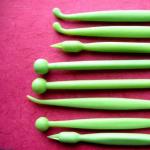Dear friends, subscribers and visitors of the blog!
In his creative work I use almost all known techniques painting on glass with stained glass paints. Do not be surprised, it is not difficult, because there are not so many of these techniques: contour, contourless and multi-layer.
Sometimes dot painting on glass is also used.- this is, perhaps, the only one of the main techniques that can be combined both with stained glass painting, and separately as a technique point to point on other surfaces
The most amazing moments in the life of an artist are the moments of creation of works ... on glass, canvas or wood
Let's take a closer look at these techniques today. and we will figure out what the specifics of each of them are and what opportunities they open up for artists. You will see that due to the effects obtained when using each technique, completely different stained glass paintings can be created with the same paints.
Let's start with the most common...
Contour painting technique
Its essence lies in the fact that first the painting is done with a contour on glass, a sketch of the work is created, and then the spaces between the contours are filled with colors, as a result of which the picture is born.
The drawing is outlined with a relief contour, preferably of the same company as the stained glass paints. If the surface is large enough, stained glass lead tape is used, which plays the same role as the contour - does not allow the stained glass paint to mix and strictly adhere to a certain place.

Examples of masters in stained glass painting using a contour
This is a matter of your taste... If you want to make the divisions in the picture wider and similar as in a real stained glass window, then choose a stained glass lead tape. If you want your work to be airy and light, choose a contour in a tube.
The height of the contour depends on how much you plan to pour paint on the glass. But the denser the paint, the less transparent it is.
Advice: stained glass paint is an amazing material, with its help you can create colorful works, and not only on glass. Practice on small slides with varying densities of ink on the glass using an outline of varying heights…. Perhaps you will discover something new for yourself!
In principle, all life is based on experiments. Experiment and live life to the fullest. And as Aristotle rightly put it: “To live is to make things, not to acquire them!”

You can “stuff” your hand in stained glass painting on small glasses, plates and vases
Advantages of this technique: the opportunity to see a sketch of the picture before filling it with flowers, a certain schematicity that allows you to break the process into separate stages, a characteristic “stained glass” look of the final work.
In general, this is a technique for curious people. It is best to use lacquer stained glass paints to create beautiful paintings in a non-contour technique, they open up more opportunities in the world of stained glass painting.
By the way, these two techniques can be combined. For example, inside a large element in an outline, you can make a pattern in a non-outline manner. And of course, flowers are especially beautiful when the stained glass paints spread gives amazing patterns inside the flower!
In the master class on painting a glass table, I show all the nuances of such work. The photo below clearly shows how beautiful spreading is created in this way.

You can purchase on a special page with a significant discount. Also in this lesson, I additionally show the technique of gilding with potal, as gilding complements this work.
As is known, hand made a special kind of creativity and it is popular all over the world. Huge number of people love to decorate the interior with their own hands.
Multi-layer technique
The essence of this drawing technique is clear from its name: paints with it are applied in several layers. Moreover, depending on what effect the artist wants to achieve, the bottom layer (or several layers) can be both completely dry and of varying degrees of dampness so that they are mixed with the layer applied above.
This technique allows you to create the most realistic images with stained glass paints, with its help, you can even convey the shadows and the play of light. This technique requires a lot of attention and patience.
Water-based stained glass paints are best suited for this technique. Although, if you practice enough, then good results can be achieved with lacquer stained glass paints.
A small (lacquer) will help you make the right choice when buying.
Here, look at the example of the work of one master of stained glass painting, where the transitions of light and shadow on the face of a boy and on the bodies of angels are clearly visible.

Examples of stained glass multi-layer technique
Consistency in work and accuracy are important here ... If errors appear, then it will be difficult to correct them. And again I repeat - try, experiment! After all, nothing is impossible - everyone can master such a subtle technique ... the main thing here is desire!
Dot painting on glass
Again, the name of this technique also speaks for itself. The image is formed by a set of dots made by contours, and its color and saturation can be varied not only by color, but also by the density of the dots, and the shades change, including when placing dots of different colors next to each other.
The complexity of painting in these techniques is approximately equal. This methodical technique is used not only on glass and ceramics. With this technique, decorate everything and on any surface… from covers to clothes.

Dot painting on glass and ceramics is very popular in the world and is in great demand.
Do you like stained glass paintings? If you want to try writing something amazing and unusual, but don't know how to approach this technique, don't worry. We all started at some point.

Painting on glass "Girl playing with a cat on the windowsill"
At one time, I wrote down in which I showed and told in detail, clearly and step by step how to create a stained glass picture, even if you are doing it for the first time.
Moreover, the master class is based on working with professional solvent paints, and after it you will know exactly how to write real works. In the lesson, I used the basic contour technique, but there are moments in the picture in which there is a non-contour and dot technique.
And as the ancient Greek philosopher Pythagoras said:“Give every day a Chance to become the most beautiful in your life!”
So if you are interested, go ahead and watch - the master class is recorded especially for you!
Also, if you already paint glass products, you can try your hand at a new technique - stained glass paints on an acrylic background on canvas. Free video lesson This is a new direction in mixed media, which is winning the love of many people.
Video note: example of stained glass for home
Friends to articlenot lost among many other articles in the web of the internet,bookmark it.So you can return to reading at any time.
Ask your questions below in the comments, I usually answer all questions quickly
Glass painting attracts attention, but for many this technique seems difficult. In fact, mastering this type of painting is easier than learning to paint with a brush.
Now you will not surprise everyone with a hand-painted bottle or a coffee can. And once the art of painting began with huge stained-glass windows striking in their magnificence in temple buildings, in Gothic cathedrals, Catholic churches. To a greater extent, it looked like from separate colored glasses, and not like painting in the truest sense of the word. The modern technique of painting on glass is somewhat different from the ancient technologies, it is quite possible to master it on your own and without significant expenses.
Development of stained glass painting technique
It is difficult to name the historical homeland of stained glass painting. Although, according to historians and archaeologists, this art originated in antiquity: they could decorate glass products with oil paints even under Alexander the Great. But since glass is a porous material, such drawings did not last long, they lost their original appearance. Therefore, the originals have not reached us.
Glass was also painted with oil paints in Rus' in the 16th and 17th centuries. In large strokes, sometimes dense, sometimes with gaps, bright patterns, stylized floral ornaments were laid on pots and jars, as well as on glassware. And in Germany, the technique of scraping paint from the surface of the glass was used.

Much later, thanks to the efforts of artists and artisans, technologies were found that allow drawing by applying paints that preserve transparency and brightness. With the advent of aniline dyes, artists have much more opportunities. No wonder they were immediately appreciated by the masters of folk art crafts.
Seeming simplicity and real difficulties
Glass painting, on the one hand, is quite simple and affordable to do it at home. On the other hand, some skills are required. A firm hand and accuracy in work will help to create a beautiful and unique drawing.
If you are ready to mess around with paints, contours, wait patiently until the layers dry to apply the next ones, if you like to turn ordinary household items into works of art, glass painting will expand your possibilities as a creator. Working with glass instills accuracy, makes you feel like a renaissance artist.

Mothers involved in the development of their children can recommend this technology in order to develop skills on various surfaces. Under the strict guidance of the elders, the child takes the first steps into the world of amazing art.
And starting from the age of 9-11, you can do it yourself. To do this, there are many offers in stores for goods for creativity: sets of stained glass paints, individual tools. Just get started - you'll love it.
Preparatory stage of glass work
The list of what you need for painting on glass is not very long. For work, special paints are required. They are sold with marking stained glass or paints on glass and ceramic surfaces. Also stencils and special contours. It is with their help that a drawing is applied, its borders. You will need brushes of various sizes and shapes, rags to remove excess paint, sponges or swabs to fill large surfaces with an even layer.

Glass must be completely clean before use. This applies to labels if bottles or cans are taken for painting. Then be sure to degrease the surface on which the pattern will be applied. This can be done easily and simply by washing with soapy water, rinsing with plenty of clean water. Allow to dry without wiping, otherwise fluff from the towel may remain on the glass.
How to draw a picture
You can study the features of the glass painting technique for a long time, but it is better to try to create your first picture. It is important to choose the size of the image according to the dimensions of the future masterpiece.
- The drawing must be pre-printed or drawn on plain paper.
- Place the pattern on the back of the glass, securing with tape.
- On the outer surface, apply a drawing scheme with a contour on the glass.
- Let dry.
- Use special acrylic paints designed for glass to fill in patterns with a brush. The process will stretch over time, as it will be necessary to dry individual fragments in order to proceed to the next ones. You can apply paint in several thin layers, achieving the desired effect.
It is important to take time to dry, so you will save your work for a long time. Also, for safety, the picture must be covered with a transparent acrylic varnish.




Fix the finished glass with a pattern in the frame. In the light, a very beautiful image will turn out. The sun's rays, passing through the paint, will delight and amuse.
The painting of bottles and jars is a little different in that the work has to be interrupted more often so that small areas have time to dry before turning and painting the other side of the product. But the principles are the same. Glass cleaning, contouring, filling with paint and varnishing.
Ideas for creativity
You can paint not only blanks made of glass, which can be turned into a picture. These can be vases, plates, jars for spices and coffee, tea utensils. At the peak of popularity, original wedding glasses, decorated with exclusive patterns. It is easy to turn an inexpensive candlestick and lamp shade into a masterpiece or make a stylish box from an ordinary jar.

In specialized stores, blanks for painting are sold in the form of dishes, souvenirs, accessories and watches. If desired, with the help of this technique it is easy to make
All this can be given to friends, relatives and colleagues for anniversaries and holidays, adding a memorable date or a hint of a reason for the celebration to the plot.


Business Organization Opportunities
Many masters, doing this fascinating type of creativity, receive, in addition to pleasure, an additional one. If the drawing is distinguished by originality, accuracy, not a hackneyed plot, then the demand for such a product will be increased.

Despite the fact that the materials for work are expensive, like everything related to art crafts, the cost of the finished product allows you to make a decent markup. Well, if the jar, bottle have lids. Then this item can be used for its intended purpose, not only as an interior decoration. Such original things are accepted for sale in the departments of handicrafts. Additional opportunities are opened by online stores, they are available to everyone today.

Trying to make something unique with your own hands is a pleasure that has every opportunity to develop into. But do not rush to think about money, first enjoy the process and master the skill to perfection.
Stained glass painting today is called painting on a glass surface with special paints. Previously, stained-glass windows were created by craftsmen from pieces of colored glass laid in a pattern according to the mosaic principle. Such stained-glass windows can be found now: in churches, museums and ancient buildings. The light penetrating through such a picture created an atmosphere of reverence and mystery.
Stained glass painting helps to create exclusive decor items - you can decorate mirrors with it, make a stained glass painting on a window or an interior door. She will find a place on a plate, it is appropriate to paint mugs or watches with her. She, like painting, helps to depict anything - and outlandish flowers, and bright butterflies, and the whole city can become a magnificent drawing in this technique.
Technology has stepped forward, and today stained-glass windows no longer need to be painstakingly assembled bit by bit. Anyone can create an unusual pattern on glass using stained glass paints. You can decorate anything you like: a glass showcase, a window, a door, and even dishes. For example, a hand-painted cup will be an excellent and unusual gift for a loved one. So, how is stained glass painting done? See our article for tips and tutorials.
Stained glass paints can be divided into several types. For example, they are divided into:
- Requiring roasting.
- Does not require roasting.
When painting with the first type of stained glass, after drying, it is necessary to burn it in a furnace or oven. Otherwise, the applied pattern will be unstable and easily washed off. Usually require water-based paint firing. It is better to paint small products with such paints. Firing rules:
- Before firing, the stained glass should dry well. Hold it for at least a day.
- Stained glass paints are harmful sudden temperature change. Otherwise, they may crack. Put the product in a cold oven, and only then turn on the fire. Accordingly, before pulling the stained glass window out of the oven, let it cool down.
- Strictly observe the firing time and temperature indicated on the packaging by the manufacturer. Insufficient firing will lead to instability of the picture. And if you burn too hard, the design on the glass can turn brown.
Paints differ in the type of solvent:
- Water based paints.
- Alcohol-based paints.
- Synthetic solvent based paints.
Water-based paints are most often acrylic. They have a number of advantages:
- Non-toxic and have no unpleasant odor. Absolutely safe, they can be used even for children's creativity.
- They mix well with each other. Therefore, with their help, you can get almost any shade.
- Water-based paints are easily washed off with plain water. Therefore, during the painting it is not scary to make a mistake, unsuccessful strokes are easily removed with a damp cloth.
The third point from the advantages easily turns into a disadvantage: when dried, acrylic paints are also unstable. Therefore, when painting products that will later come into contact with water, they will have to be additionally fixed: fired or varnished.
Solvent-based paints are more durable, but for correcting inaccuracies, cleaning hands and tools after work solvent required. In addition, due to the unpleasant odor, they are not recommended for children, and work with them in closed, poorly ventilated areas. But synthetic paints are thicker, better distributed over the surface, level themselves and hide small irregularities.
In addition, colors separate on basic paints and contours. Outlines will be needed in order to separate different colors from each other. So the colors do not spread, and the picture will turn out clearer.
When choosing a paint, carefully read the instructions. It should indicate that it is suitable for painting glass and ceramics. There you will also find information on the basis of which solvent it is made, whether it requires firing or special application conditions.
Gallery: stained glass painting (25 photos)























Preparation for work
 Before you start painting, prepare everything you need:
Before you start painting, prepare everything you need:
- Special glass for painting (sold in the art departments), any glass product or surface.
- Paints. If this is your first time painting glass surfaces, go for paints that don't require firing. For greater durability, it will be possible to fix the result with a transparent varnish.
- Outline paints. Usually sold in a set with regular ones or in the same department. It is better to choose the contours of the same company as the paints.
- Brushes. To work, you will need several brushes of different thicknesses. The thinnest one draws contours and small details, and the thick one fills large areas. Brushes are best taken from artificial pile. Some paints are available with special nozzles. They can be painted without using a brush. But at least one thin one is better to cook anyway: suddenly you need to correct the drawing or draw a clear line.
- Acrylic clear lacquer. It allows you to fix the pattern and achieve durability even without firing.
- A palette for mixing colors.
- Stencil for transferring the pattern onto glass. You can make it yourself, or you can buy it ready-made in any art department.
- Marker for transferring the picture on the glass surface.
- Water, alcohol or synthetic thinner, depending on the base of the paints.
- Napkins, cotton swabs and toothpicks to correct the pattern.
- A rag to wipe the brush while working.
Now prepare your workspace. It should be with good lighting. Cover the surface with unnecessary rags or paper. If you are going to use stained glass paints based on organic solvents, the work area must be well ventilated.
Painting with stained glass paints: master class
 After you prepare all the tools, you can start painting.
After you prepare all the tools, you can start painting.
- Degrease your work surface first. To do this, wash it with any detergent, wipe with alcohol, acetone or nail polish remover. So, the paint is easier to apply and lasts longer.
- Attach the stencil to the glass, and circle the outlines with a marker. Experienced needlewomen use contour paints instead of a marker. For beginners, it’s better not to rush, otherwise you can ruin the product.
- Apply over the course contour paint lines. Try to move from the center to the edges. The line should be solid, of the same thickness. Try to avoid breaks and thickening, unless it is intended by the sketch. If you are using a contour that needs to be squeezed out of a tube, experiment with the pressure beforehand.
- Let the contour dry. The packaging usually indicates the time it takes to dry. You should not rush and continue to work with a dry drawing. Blurred contours will look ugly and spoil the whole look.
- When the outline is dry, start filling in the stained glass elements. This should also be done in the direction from the middle to the edges. If you need to mix several colors, use the palette.
- After all the elements of the picture are painted over, you can paint over the background. It can be done with paint or varnish.
- Wait for the drawing to dry. If necessary, burn the drawing in the oven or oven, and also cover it with a colorless varnish on top.
Virage is ready. If you have used a small glass for painting, frame it and hang it on the wall. Decorated in this way, dishes or a vase can be presented to relatives or friends. Such a unique handmade gift will delight anyone.
Sketch for stained glass painting
 for stained glass painting is a black and white drawing, on which all the contours are well traced. Pictures can be on any topic. They depict flowers, animals and birds, national and ethnic motifs, portraits, landscapes and still lifes, narrative paintings and much more.
for stained glass painting is a black and white drawing, on which all the contours are well traced. Pictures can be on any topic. They depict flowers, animals and birds, national and ethnic motifs, portraits, landscapes and still lifes, narrative paintings and much more.
The simplest sketches are made in the form of stencils. To do this, cuts are made on a piece of cardboard or plastic. They correspond to those parts of the picture that should be painted over in the future. The stencil is placed on top onto a glass surface and outline with a marker or outline. Such a blank can be bought at an art store, or you can make it yourself with a piece of cardboard and a sharp knife.
More complex drawings can hardly be represented as a stencil. Therefore, such sketches are transferred to glass by attaching a blank from the back. You can buy a finished scheme in a store or make it yourself by printing your favorite picture on a printer.
DIY stained glass paints
Stained glass paints do not have to be bought. They are easy to make by hand.. To do this, take a jar of PVA glue and food coloring. To prepare one color, two tablespoons will be enough. Mix the glue and dye in a small waste container. Now you can use. Such a stained-glass window dries for about a day.
Safety
So that your new hobby does not harm your health, follow some rules:
- Stained glass painting with dyes based on synthetic solvent use only in a well-ventilated area.
- Keep all drawing supplies out of the reach of small children.
- The stained-glass window should not come into contact with food. Therefore, the dishes on which the stained-glass painting is made lose their functionality and become exclusively an interior item. In the most extreme case, it is allowed to paint the lower part of the wine glass, glass or cup. The top edge should be free from the pattern by at least one and a half centimeters.
By following these simple rules, you can avoid unpleasant situations, and a new hobby will only bring pleasure.
(31 ratings, average: 5,00 out of 5)Start with small items. So, with the help of artistic painting, you can transform an ordinary glass candlestick beyond recognition, turn an ordinary smooth glass into a work of art, and a bottle into a mysterious container for all sorts of little things. Having practiced enough with small objects, you can move on to painting on a larger surface, for example, on window glass.

Advice! Changing the picture every time for a new holiday, you will create a unique mood in the room.

Multi-colored pieces of glass, shimmering in the sun, form bizarre color and light effects.
For inspiration, you can turn to the canvases of famous artists. Perhaps the impressionists and representatives of modernity are most suitable here. You can also use only your own imagination.


Material preparation: choosing paints
Before starting work, it is very important to choose good paints for painting on glass. Poor-quality materials will spoil any, even skillfully executed drawing and will not bring any pleasure from work. Therefore, it is better to invest once in the purchase of quality tools for work. To make glass painting voluminous and interesting, stained glass paints should be used. They are distinguished by a translucent texture, which allows, after the paint has dried, to look at the glass through the colored layer. Thus, a stained glass effect is obtained.

- one;
- synthetic.

Water-based formulations are ideal for beginner craftsmen, as they have the following advantages:
- the ability to be easily washed off, which will allow you to quickly fix an unsightly stroke;
- lack of odors;
- the ability to easily mix, which will allow you to achieve almost any shade and degree of saturation without problems.

At the same time, water-based paints also have a significant drawback - they are unstable to high humidity in the room.
When choosing a paint, carefully study the label. Look for an inscription confirming that the paint is suitable for painting on glass and ceramics. Do not be too lazy to find out the date of manufacture. If it is overdue, then the paints will be dried up, and it is very difficult to work with such.

Water-based paints must not be thinned or applied to uneven surfaces.

Choosing brushes and other tools
It is equally important to choose good brushes for glass painting. If you use acrylic paints (i.e. water-based), then get soft tools to work with. Brushes must contain artificial bristles.

Advice! Get several brushes of different thicknesses at once, as you will have to draw fine details and various lines.

Another necessary tool is tubes with contours (outliners and contour pastes). They are needed to draw the contours of certain areas, which is caused by the need to separate paints that differ in color. This will ensure that there are no sloppy sagging at the junction of the drawings due to the mixing of colors. These tubes have another purpose. So, they will allow you to shade some fragments of the picture due to a clearer drawing of lines.

When choosing the color of the outliner, be guided by the general nature of the picture. Depending on it, opt for outliners in black, gold, silver and other colors.

For painting, you will also need related materials:
- napkins;
- rags;
- sponge;
- container for mixing paints.

When choosing materials for a future masterpiece, do not forget about varnish. It will protect the painting from damage, make it more resistant to various influences and simply give a beautiful shine. Of course, painting with varnish is optional, but this will save the product from problems in the future.

Advice! To make painting on glass with stained glass paints more accurate, you can use stencils.

Step-by-step instructions for stained glass painting
For painting with stained glass paints on glass, let's take a master class as an example. The general workflow includes the following steps:
- First you need to degrease the base on which the drawing will be applied. This is necessary to give durability to the painting and for a smoother application of paint.

Preparing the glass surface for stained glass painting
- Then you should make a sketch of the future masterpiece. To do this, apply the outline of the composition on a dry surface. Thus, you will outline the boundaries of individual zones, each of which will be painted in its own color.

Screen printing on the container
- Having thus prepared a template for the composition, you can begin to apply paint. Don't be upset if you don't get it right the first time. You must first get used to and feel the ideal layer thickness. If you apply the paint too thinly, then there is a high probability of streaks appearing after the pattern dries, while the surface shade will be inhomogeneous. If you apply them too thickly, then paint from adjacent areas can easily move. Understanding the required thickness of the paint layer will come only with practice, over time.

Advice! If at first it will be difficult for you to apply the paint as accurately as possible, you can beat the lack of artistic skills. To do this, choose drawings not in classical and realistic styles, but compositions in the spirit of cubism, modern and abstract art, etc.

- After applying the paint, the work does not end at all. Now you need to wait for the complete drying of the “canvas”. You can use a hair dryer to speed up the process. However, professionals do not recommend such drying, as it can cause the paint layer to crack and darken individual areas. So if you do not want to specifically achieve such effects, then it is better to refuse drying by thermal means.
- At the final stage, the composition should be varnished. He will give her shine and fix the picture.


The nuances of the correct painting on glass
Do not think that painting on glass with stained glass paints is an expensive pleasure. You can save on the purchase of paints. To do this, do not purchase individual containers with paints, but the whole set.

By purchasing a set of paints right away, you get the opportunity to save money, as well as diversify the pattern.
To make the drawing process safe, do not forget about some precautions. Avoid contact of the paint and the painting itself with food and drinks. Paint should not get into the oral cavity. Therefore, when decorating glasses, glasses and saucers, they should not be used for their intended purpose in the future. Their main current function is to serve as a decor item. This is if you want to be completely safe. However, it is quite acceptable to paint “acting” tableware, subject to a minimum indentation from the upper cut of a cup or glass of 1.5 cm. That is, your lips and nose should not directly contact the paint.

When you have already learned how to accurately paint small objects and even switched to painting on glass, you can do more large-scale interior decoration. Your own handicrafts will give it a unique bohemian style, and home accessories made by you will have their own history.

When decorating the interior, it is necessary not only to carefully paint any object, but also to focus on the style of the room in which it will be located. Here it is not enough to choose any drawing you like. It is necessary to approach the choice of a template, focusing on the stylistic orientation of the interior. So, some interior styles, such as, for example, hi-tech, minimalism, loft, do not particularly favor painted objects. However, if the room is designed in such areas of design thought as Art Nouveau, Art Nouveau, Provence, ethnic, then the painting will be more than appropriate. Choose a specific plot should be based on the style.


So, in order to emphasize the ethnic style with an African bias, one should use motifs inspired by the nature of the savannas and prairies. The predominant colors should be yellow, brown, orange, red, etc. To support the Provence style, on the contrary, you should choose more calm, pastel colors: pale blue, pale pink, lemon, lavender, etc. You can be inspired by the canvases of such famous French impressionists as Claude Monet, Edouard Manet, Cezanne, etc. You can also use pictures for painting on glass with stained glass paints borrowed from the Internet.
Painting on glass with stained glass paints – process is exciting and creative.
To give the interior a unique character and reveal your creative abilities, you should try yourself as an artist!
Therefore, it is not surprising that recently this type of hand-made has become more and more popular.


Painting with stained glass paints in ethnic style

Antique table lamp with stained glass painting under Tiffany


As it turns out, glass is the perfect material for making all kinds of fantasies come true. And the process of painting with different colors helps to achieve spiritual harmony and tranquility.

Original set: jug and glasses in bright colors

Start with small items. So, with the help of artistic painting, you can transform an ordinary glass candlestick beyond recognition, turn an ordinary smooth glass into a work of art, and a bottle into a mysterious container for all sorts of little things. Having practiced enough with small objects, you can move on to painting on a larger surface, for example, on window glass.

Advice! Changing the picture every time for a new holiday, you will create a unique mood in the room.

Multi-colored pieces of glass, shimmering in the sun, form bizarre color and light effects.
For inspiration, you can turn to the canvases of famous artists. Perhaps the impressionists and representatives of modernity are most suitable here. You can also use only your own imagination.


Material preparation: choosing paints
Before starting work, it is very important to choose good paints for painting on glass. Poor-quality materials will spoil any, even skillfully executed drawing and will not bring any pleasure from work. Therefore, it is better to invest once in the purchase of quality tools for work. To make glass painting voluminous and interesting, stained glass paints should be used. They are distinguished by a translucent texture, which allows, after the paint has dried, to look at the glass through the colored layer. Thus, a stained glass effect is obtained.

- one;
- synthetic.

Water-based formulations are ideal for beginner craftsmen, as they have the following advantages:
- the ability to be easily washed off, which will allow you to quickly fix an unsightly stroke;
- lack of odors;
- the ability to easily mix, which will allow you to achieve almost any shade and degree of saturation without problems.

However, water-based paints also have a significant drawback - they are unstable to high humidity in the room.
When choosing a paint, carefully study the label. Look for an inscription confirming that the paint is suitable for painting on glass and ceramics. Do not be too lazy to find out the date of manufacture. If it is overdue, then the paints will be dried up, and it is very difficult to work with such.

Water-based paints must not be thinned or applied to uneven surfaces.

Choosing brushes and other tools
It is equally important to choose good brushes for glass painting. If you use acrylic paints (i.e. water-based), then get soft tools to work with. Brushes must contain artificial bristles.

Advice! Get several brushes of different thicknesses at once, as you will have to draw fine details and various lines.

Another necessary tool is tubes with contours (outliners and contour pastes). They are needed to draw the contours of certain areas, which is caused by the need to separate paints that differ in color. This will ensure that there are no sloppy sagging at the junction of the drawings due to the mixing of colors. These tubes have another purpose. So, they will allow you to shade some fragments of the picture due to a clearer drawing of lines.

When choosing the color of the outliner, be guided by the general nature of the picture. Depending on it, opt for outliners in black, gold, silver and other colors.

For painting, you will also need related materials:
- napkins;
- rags;
- sponge;
- container for mixing paints.

When choosing materials for a future masterpiece, do not forget about varnish. It will protect the painting from damage, make it more resistant to various influences and simply give a beautiful shine. Of course, painting with varnish is optional, but this will save the product from problems in the future.

Advice! To make painting on glass with stained glass paints more accurate, you can use stencils.

Step-by-step instructions for stained glass painting
For painting with stained glass paints on glass, let's take a master class as an example. The general workflow includes the following steps:
- First you need to degrease the base on which the drawing will be applied. This is necessary to give durability to the painting and for a smoother application of paint.

Preparing the glass surface for stained glass painting
- Then you should make a sketch of the future masterpiece. To do this, apply the outline of the composition on a dry surface. Thus, you will outline the boundaries of individual zones, each of which will be painted in its own color.

Screen printing on the container
- Having thus prepared a template for the composition, you can begin to apply paint. Don't be upset if you don't get it right the first time. You must first get used to and feel the ideal layer thickness. If you apply the paint too thinly, then there is a high probability of streaks appearing after the pattern dries, while the surface shade will be inhomogeneous. If you apply them too thickly, then paint from adjacent areas can easily move. Understanding the required thickness of the paint layer will come only with practice, over time.

Advice! If at first it will be difficult for you to apply the paint as accurately as possible, you can beat the lack of artistic skills. To do this, choose drawings not in classical and realistic styles, but compositions in the spirit of cubism, modern and abstract art, etc.

- After applying the paint, the work does not end at all. Now you need to wait for the complete drying of the “canvas”. You can use a hair dryer to speed up the process. However, professionals do not recommend such drying, as it can cause the paint layer to crack and darken individual areas. So if you do not want to specifically achieve such effects, then it is better to refuse drying by thermal means.
- At the final stage, the composition should be varnished. He will give her shine and fix the picture.


The nuances of the correct painting on glass
Do not think that painting on glass with stained glass paints is an expensive pleasure. You can save on the purchase of paints. To do this, do not purchase individual containers with paints, but the whole set.

By purchasing a set of paints right away, you get the opportunity to save money, as well as diversify the pattern.
To make the drawing process safe, do not forget about some precautions. Avoid contact of the paint and the painting itself with food and drinks. Paint should not get into the oral cavity. Therefore, when decorating glasses, glasses and saucers, they should not be used for their intended purpose in the future. Their main current function is to serve as a decor item. This is if you want to be completely safe. However, it is quite acceptable to paint “acting” tableware, subject to a minimum indentation from the upper cut of a cup or glass of 1.5 cm. That is, your lips and nose should not directly contact the paint.

Competent application of a pattern with stained glass paints on glasses for permanent use


